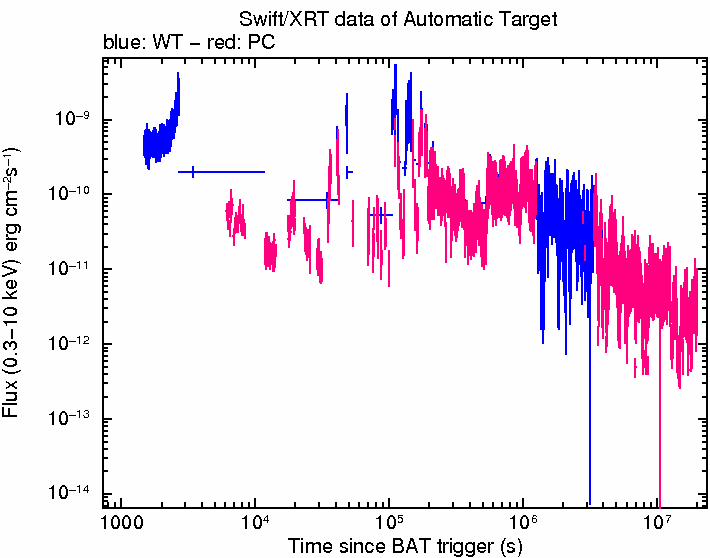The X-ray flux graph below shows the latest update for gamma/x-ray source GRB 110328A (J164449.3+573451).
The average x-ray luminosity during its first day (up to s = 104 seconds) was estimated to be 2.5 X 1047 ergs/s (see earlier posting) source Almeida and De Angelis. Since then, seven and a half months have elapsed and its intensity has declined about 30 fold. So its luminosity can now be stated to average around 1046 ergs/s.
This is still in the energy range of a quasar, quasars typically having luminosities in this part of the x-ray spectrum ranging from 1043 to >1047 ergs. To counter an opinion posted in August on physorg, this point should be further clarified. One person claimed that I was overstating to term this source a quasar having an x-ray luminosity at the upper end of the quasar luminosity range. I still stand by this. To give a reference published in Monthly Notices, James Reeves and Martin Turner (2008) state on page 5 of their paper that the quasar x-ray luminosity extends from “1041 erg/s for the least luminous Seyfert 1 to ~1047 ergs/s for the most luminous quasars.” The intensity of GRB 110328A has declined considerably from what it was during its first day, but still at 1046 ergs/s it should rate as a moderately strong quasar.
Also the criticism was aired that the the high energy spectrum for this source does not match that of a quasistellar object. In fact, Bloom et al. (2011) compare the emission of GRB 110328A to that of a blazar which is a particular kind of quasar. So, again my original claim still stands.
The main point to consider is that this source is still active now after seven and a half months. Almeida and De Angelis who first proposed that this was a black hole snacking on a star predicted that the source should fade out after at most a few months. Indeed, its intensity is dimishing, but it has now lasted more than three times longer than what the snack theory had expected and is still going strong as a moderately luminous quasar. I think it is time that the black hole snack theorists should admit defeat. Invoking a repeating series of ongoing snacks also seems far fetched considering that this source is emitting a wind of relativistic particles. Also, in August 2011 the radio-emitting region was reported to be expanding at half the speed of light implying a rapid matter outflow from the source.
The power source for quasars remains a mystery in conventional astrophysics given its inability to explain how matter would accrete against the force of such a wind. To date the only feasible explanation is that proposed over 25 years ago by the subquantum kinetics physics methodology.
Paul LaViolette

